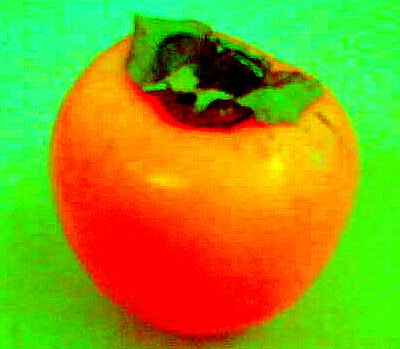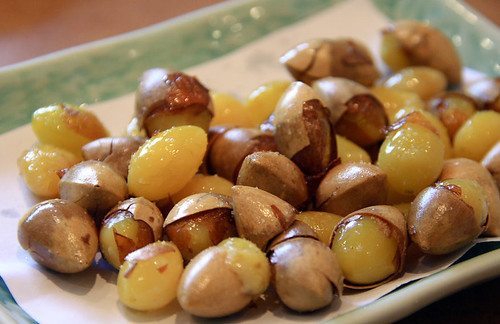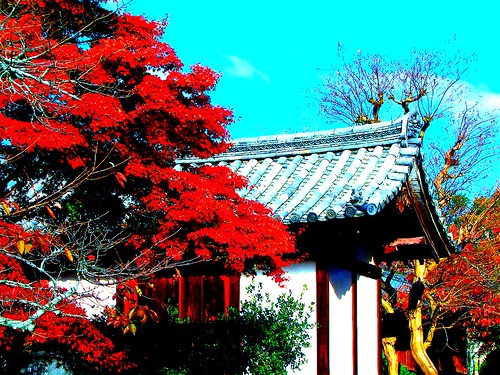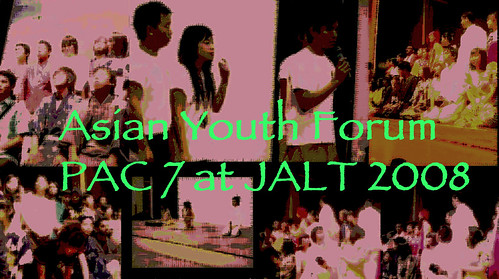This blog serves several purposes: Communicating with my students outside of the classroom, publishing my students' work, and it serves as a resource for both students and teachers.
Saturday, November 29, 2008
ETJ Tokyo Expo at Toyo Gakuen University Hongo Campus
My powerpoint presentation is below.
This is a slideshow of a list roll I made for my presentation.
Thursday, November 27, 2008
Toyo Gakuen University Interest-based English - Travel: Shopping
In todays lesson we will learn about shopping.
Let's practice what we have learned from the textbook. Click this link: Passport Online.
Click this link to learn about famous shopping areas in London: London's favourite shopping streets.
Click this link to learn and practice some more shopping vocabulary. Shopping vocabulary, useful phrases, dialogues, games and tests.
Click these links to listen to conversations in London shops: Listen 1: Buying a pair of shoes. Listen 2: Buying a pair of jeans.. Finally, there are many more great sites listed on the website for Academie Nancy-Metz. Click this link: http://www.ac-nancy-metz.fr/enseign/anglais/Henry/mag.htm.
Toyo Gakuen University Freshman English 2 - Reading Midterm Exam Study Guide
- Timed reading: scan a reading for 1 minute in order to find specific information. This is a multiple choice type question.
- Reading for the main idea. This is a multiple choice type of question. You will have to choose from 4 choices.
- Reading for details. This is a multiple choice type of question. You will have to choose from 4 choices.
- Making inferences. This is a multiple choice type of question. You will have to choose from 4 choices.
- Matching activities: A. Match the vocabulary from the textbook with the Japanese translation. B. collocations.
- Personal response. This is a short paragraph type of answer. You will have to write 2 or 3 sentences in order to answer the question. Your answer should be at least 50 words.
Use the following resources in order to study for the exam:
- American Headway Level 2 Unit 6 Crossword
- Unit 8 Vocabulary Flashcards on Quizlet
- Unit 8 Vocabulary Flashcards on StudyStack
- Simple English News articles about Brad Pitt and Angelina Jolie, Madonna and Guy Ritchie, David and Victoria Beckham.
- Wikipedia articles about Milton Petrie, and Hetty Green, and Schenzen City.
Also, review these posts from Mr. Stout's Blog: Unit 7 - Celebrity Interview , Unit 8 - Dilemmas and look at these posts from Sarah's Blog: Unit 6, Unit 7, Unit 8.
Good luck!
Wednesday, November 26, 2008
Toyo Gakuen University Interest-based English 12 Music. Project 2. Lesson 1.
First, let's watch some of the presentations made by students last semester. Watch the presentations and answer the questions on the document called IE12 Powerpoint Questions. The document is in the lecture folder.
Now it's your turn. Here's your assignment:
Make a powerpoint presentation about a musical artist that you like.
Here's your project checklist:
- at least 5 slides in total
- a title slide
- a background slide including:
- When the band was formed
- Where the band was formed
- The members of the band
- The genre
- The most popular song
- Awards, trivia, record label (choose one)
For solo artists:
Where the artist was born- When the artist was born
- The artist's instrument
- The genre
- The most popular song
- Awards, trivia, record label (choose one)
- Two or more slides for profiles, discography, concerts (choose one)
Have fun!
Toyo Gakuen University Homestay English: Unit 9 - At a restaurant
Tuesday, November 25, 2008
Shibaura Institute of Technology Paragraph Writing 2 students write about their favourite architectural structures
 Seto bridge is a famous bridge in Kagawa and Okayama. It connects Kagawa and Okayama. It is a very large and long bridge, 9,368 meters long. It consists of three structures: two different styles of suspension bridge and a truss bridge. It has a four-lane expressway and a two-lane railroad. The Shikoku district has not Shinkansen, but it has plan for building a Shinkansen road. So Seto bridge was designed that it can add more two railroads. Its color is light gray. This color suits this place. You can see a beautiful view of the Seto Inland Sea when you drive or get into a train.
Seto bridge is a famous bridge in Kagawa and Okayama. It connects Kagawa and Okayama. It is a very large and long bridge, 9,368 meters long. It consists of three structures: two different styles of suspension bridge and a truss bridge. It has a four-lane expressway and a two-lane railroad. The Shikoku district has not Shinkansen, but it has plan for building a Shinkansen road. So Seto bridge was designed that it can add more two railroads. Its color is light gray. This color suits this place. You can see a beautiful view of the Seto Inland Sea when you drive or get into a train.Ayana S.
 Yokohama Landmark tower is a famous building. It is the tallest building made of concrete in Japan. It is 295.8 meters high. This building has 70 floors. It is made of concrete, glass and steel. The lower floors contain shops, restaurants, clinics, and offices. A hotel occupies forty-nineth to seventieth floors. This building has very many facilities. Yokohama Landmark tower is my favorite building.
Yokohama Landmark tower is a famous building. It is the tallest building made of concrete in Japan. It is 295.8 meters high. This building has 70 floors. It is made of concrete, glass and steel. The lower floors contain shops, restaurants, clinics, and offices. A hotel occupies forty-nineth to seventieth floors. This building has very many facilities. Yokohama Landmark tower is my favorite building.Satomi Y.
 This is a famous building in Kyoto. It is a tall building, 131meters high. It consists of two structures: a tall tower and a rectangular structure. The tower is on the rectangular structure. The rectangular structure is hotel and shopping area. You can get a great view of the city from a viewing platform at the top of the tower. The building is made of concrete, glass and iron. The building was made in 1964. This building is called Kyoto Tower.
This is a famous building in Kyoto. It is a tall building, 131meters high. It consists of two structures: a tall tower and a rectangular structure. The tower is on the rectangular structure. The rectangular structure is hotel and shopping area. You can get a great view of the city from a viewing platform at the top of the tower. The building is made of concrete, glass and iron. The building was made in 1964. This building is called Kyoto Tower.Kohei K
 This is a famous tower in Tokyo. It is a very large and tall building, 333 meters high. It is the tallest tower in Tokyo. It was built in 1958. The color of the building is red and white. It has a rectangular base and an antenna. The antenna is cylindrical and thin. The tower has a big observatory 150m from the ground and a small observatory 250m from the ground. You can get a great view of the city from the big observatory and the small observatory. The tower is made of concrete and glass. It is used mainly for a transmitter tower. It is a symbol of Tokyo. It is Tokyo Tower.
This is a famous tower in Tokyo. It is a very large and tall building, 333 meters high. It is the tallest tower in Tokyo. It was built in 1958. The color of the building is red and white. It has a rectangular base and an antenna. The antenna is cylindrical and thin. The tower has a big observatory 150m from the ground and a small observatory 250m from the ground. You can get a great view of the city from the big observatory and the small observatory. The tower is made of concrete and glass. It is used mainly for a transmitter tower. It is a symbol of Tokyo. It is Tokyo Tower.Akitsugu K.
 Horyu-ji is a famous building in Japan. It is an old temple in Nara and it was built by Prince Shotoku in 607 A.D. There is a five-storied pagoda in it, which is 24 meters high. Horyu-ji is the oldest wooden building in existence. At the gate of Horyu-ji, a pair of Kongorikishi statues stands. In 1993, Horyu-ji was registered on the UNESCO World Heritage List. So, all Japanese know this temple.
Horyu-ji is a famous building in Japan. It is an old temple in Nara and it was built by Prince Shotoku in 607 A.D. There is a five-storied pagoda in it, which is 24 meters high. Horyu-ji is the oldest wooden building in existence. At the gate of Horyu-ji, a pair of Kongorikishi statues stands. In 1993, Horyu-ji was registered on the UNESCO World Heritage List. So, all Japanese know this temple.Yukiya A.
 This is a famous building in Kyoto, which many people visit. It is small. It is three stories high. Although it was burned in 1950, it was rebuilt in 1955. You cannot enter it because it is old, thin and fragile. The building is made of wood and it is gilded. It was designed by Yoshimitsu Ashikaga. It is beautiful. It is a Kinkakuji.
This is a famous building in Kyoto, which many people visit. It is small. It is three stories high. Although it was burned in 1950, it was rebuilt in 1955. You cannot enter it because it is old, thin and fragile. The building is made of wood and it is gilded. It was designed by Yoshimitsu Ashikaga. It is beautiful. It is a Kinkakuji.Yuki K.
 The building is a university. It is located in Toyosu. Its material is reinforced concrete and its color is gray. Its shape is like The Arche de Triomphe. The size is about 25 meters high. The building has many windows, and has over 15 floors. You can get a great view of the city from the top floor. This building is S.I.T. Toyosu campus.
The building is a university. It is located in Toyosu. Its material is reinforced concrete and its color is gray. Its shape is like The Arche de Triomphe. The size is about 25 meters high. The building has many windows, and has over 15 floors. You can get a great view of the city from the top floor. This building is S.I.T. Toyosu campus.Daichi M.
 It is a famous building in Australia. It is a concert hall where orchestras play. It was designed by John Utsson, and made in 1973. It consists of the concert hall, the opera theater, the drama theater, the playhouse, and the studio theater. It is 180-meters in height. So, it is very high. It is a sharp face. It is made of granite and plywood. 1,056,500 tiles that were made in Sweden are
It is a famous building in Australia. It is a concert hall where orchestras play. It was designed by John Utsson, and made in 1973. It consists of the concert hall, the opera theater, the drama theater, the playhouse, and the studio theater. It is 180-meters in height. So, it is very high. It is a sharp face. It is made of granite and plywood. 1,056,500 tiles that were made in Sweden areon the roof. These tiles are very beautiful, and this building is a famous sightseeing spot. I like this place seen from the river. Especially, in the evening it is beautiful.
Shun T.
Friday, November 21, 2008
Toyo Gakuen University Interest-based English - Travel: Taking the bus
In today's lesson we will learn useful English that we can use on a bus.
First, let's practice some vocabulary. Click this link: Travel English Vocabulary: Using Public Transportation.
Here's a video about taking a bus in Tel Aviv, Isreal. Watch the video and do the quiz. There are 5 questions in the quiz.
Now, use the Currency conversion exchange widget on the right side of this page. How much is 10 Isreali sheqels in yen?
Click the link for more information on travelling in Isreal.
Thursday, November 20, 2008
Toyo Gakuen University student makes a movie.
Enjoy!
Wednesday, November 19, 2008
Homestays in Burundi, Portugal, The United States, and Tahiti
First let's practice some vocabulary. Click this link: http://www.wordchamp.com/lingua2/List.do?packItemID=123832930159397048
Now watch the videos. Answer the questions below for each video:
- Where do homestay guests stay?
- What do homestay guests eat?
- What do homestay guests do?
A Homestay in Portugal
A Homestay in San Francisco
A Homestay in Tahiti
Which homestay holiday would you like to do?
Leave a comment.
Toyo Gakuen University Interest-based English Semester 2 Music Genres Presentation
You are finished if you can check every box.
I have…
- uploaded a picture (1 point)
- given the picture a title.(1 point)
- included the URL of the picture (1 point)
- recorded my talk (2 points)
- recorded three questions about my talk (2 points)
- answered the questions asked by all members of the class (8 points)
- participated in a conversation of at least 6 turns with two people (5 points)
Watch the powerpoint presentations made by the students in last semester's class.
Enjoy!
Thursday, November 13, 2008
Haiku by Toyo Gakuen University Extension Centre Students

Persimmon
Originally uploaded by panduh
Wednesday, November 12, 2008
Toyo Gakuen University IE-12: Music. If Everyone Cared by Nickelback
I've posted about this song before.
Click here to see the earlier post: http://mrstoutsblog.blogspot.com/2007/06/y-ou-can-make-difference-video-by.html
Tuesday, November 11, 2008
November 11th: Remembrance Day, a day of Peace
Here is a beautiful poem. A Canadian soldier in World War 1 wrote the poem. I memorised the poem when I was a school boy. I recited the poem every Remembrance Day. I think it's a beautiful poem. I hope you do too.
In Flanders Fields
In Flanders fields the poppies blow
Between the crosses, row on row,
That mark our place; and in the sky
The larks, still bravely singing, fly
Scarce heard amid the guns below.
We are the Dead. Short days ago
We lived, felt dawn, saw sunset glow,
Loved and were loved, and now we lie,
In Flanders fields.
Take up our quarrel with the foe:
To you from failing hands we throw
The torch; be yours to hold it high.
If ye break faith with us who die
We shall not sleep, though poppies grow
In Flanders fields.
Sunday, November 09, 2008
Shibaura Institute of Technology English Conversation Intermediate 2 Mid-term Exam Study Guide
The midterm exam is next Saturday. You can prepare by practicing the tasks in the study guide that I sent to you by e-mail.
This video will help you do the second task.
Good luck!
Friday, November 07, 2008
Toyo Gakuen University Interest-based English - Travel: Lesson 7
Today we will learn useful English we can use in a restaurant.
The Smallest Restaurant in the World from mmmarzio on Vimeo.
Now let's practice.
- Click here: Passport Online.
- Move your cursor to 9 Are you ready to order
- Move your cursor to 9a What kind of food is this?
- Do the task
- Move your cursor to 9b Find the differences
- Do the task
- Click here: Passport Online tests
- Do the practice test
Thursday, November 06, 2008
Toyo Gakuen University Homestay English 2008 Midterm Exam Study Guide
Part 1: Vocabulary.
You must know the following words and phrases from your textbook:
- perplexing
- willing
- expression
- intimate
- inquire about
- transition
- curiosity
- affection
- dialect
- widen one’s horizons
Part2: Multiple choice questions about Units 1 - 6 in your textbook.
Part3: 2 short paragraph answer type questions. You will be asked to write one or two paragraphs for each question. Your answer should be between 50 words and 100 words.
Here are the questions:
*Describe a homestay trip that you would like to do in the future. Include the following points:
- Where you would like to do a homestay.
- Why you want to do a homestay.
- How you would prepare for the homestay.
- The type of homestay family you would like. For example: an older couple with no children, or a young couple with young children.
- What you would like to do during the homestay.
Study hard and good luck!
Wednesday, November 05, 2008
Toyo Gakuen University IE-12: Music. Yesterday by the Beatles
Now watch Yesterday with Japanese translation. Click this link: http://jp.yappr.com/welcome/Video.action?videoGuid=EB6EEBCA-C89A-4E64-81F0-CBF9BE3B2D21
Enjoy!!
PAC 7 at JALT 2008 - teachers and students learning together
Last weekend an amazing event happened at the National Olympics Memorial Youth Center in Yoyogi, Tokyo. The event was PAC 7 at JALT 2008. Students and teachers from Japan, Russia, and all over Asia took part in the event. One of the most impressive parts of the event was the Asian Youth Forum. Students from Asian countries took part in workshops and made presentations. They shared their culture and they shared their ideas.
Toyo Gakuen University teachers took part in the event too including Andy, Sarah, Claire, Cara, and me. Some Toyo Gakuen students volunteers as interns too. I hope more Toyo Gakuen University students will get involved next time.
Asian Youth Forum participants performing their native songs and dances.
Asian Youth Forum participants at the opening ceremony of PAC 7 at JALT 2008.
Yoko, a Toyo Gakuen student, serving as an intern at the conference.











I found
A ginko nut near my house
in the park
by Kuniko
What is in my fridge?
Shrimp, salmon, and oysters are
I cannot eat more
by Miki